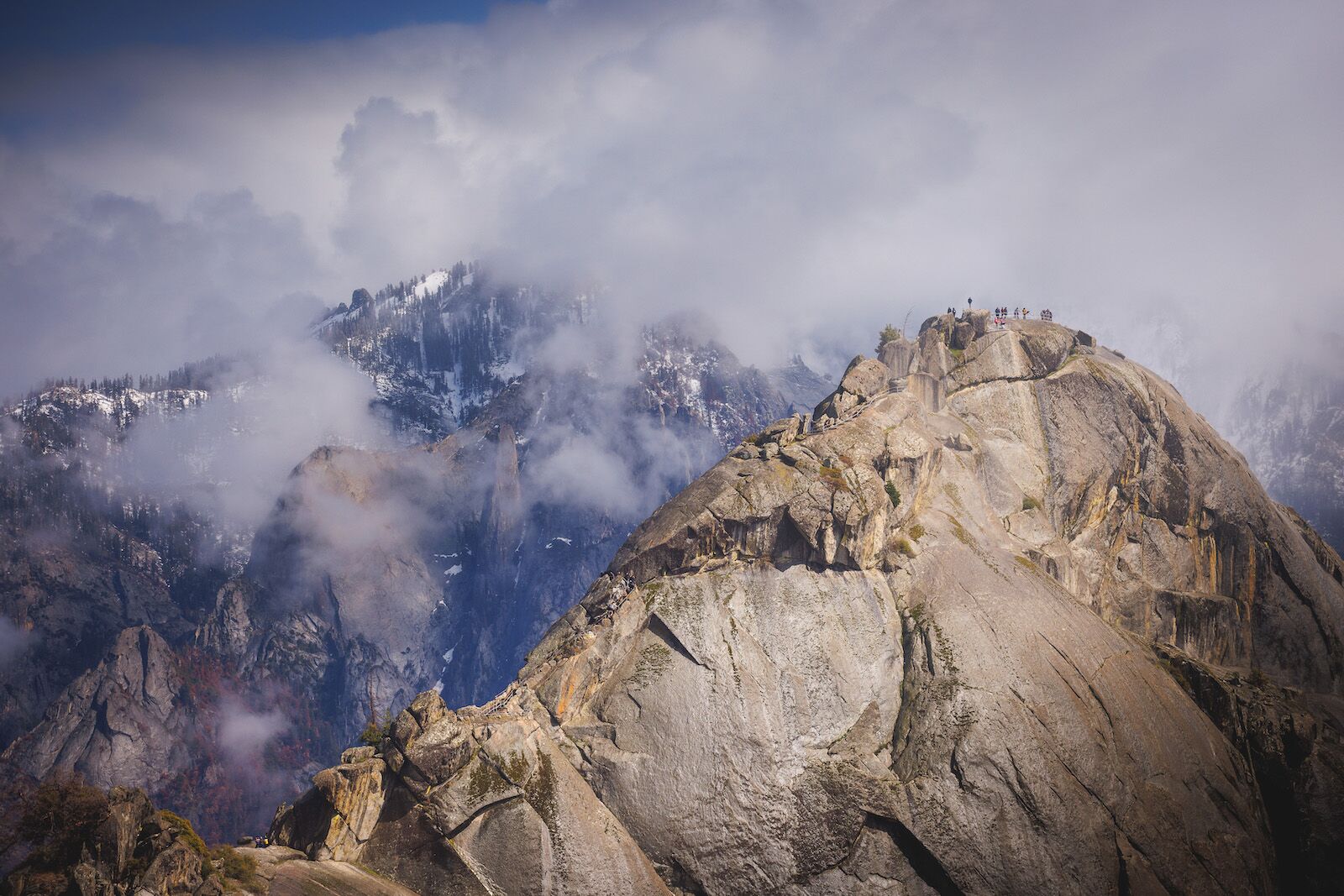The area which now is Sequoia National Park shows evidence of Native American settlement as early as AD 1000. The area was first home to "Monachee" (Western Mono) Native Americans, who resided mainly in the Kaweah River drainage in the Foothills region of what is now the park, though evidence of seasonal habitation exists as high as the Giant Forest. Members of this tribe were permanent residents of the park, with a population estimate of around 2,000. In the summertime the Tubatulabal Native Americans used the eastern part of the area (the Kern River drainage) as their summer hunting grounds. During this time, the Western Mono tribe would travel over the high mountain passes to trade with tribes to the East. To this day, pictographs can be found at several sites within the park, notably at Hospital Rock and Potwisha, as well as bedrock mortars used to process acorns, a staple food for the Monachee people.
The first European settler to homestead in the area was Hale Tharp, who famously built a home out of a hollowed-out fallen giant sequoia log in the Giant Forest next to Log Meadow. Tharp arrived in 1858 to the region and encountered several groups of Native Americans, the largest being around 600 with several other smaller groups found at higher elevations. After becoming friendly with the Western Mono tribe, Tharp was shown the Giant Forest Sequoia Grove. After his settlement, more settlers came around 1860. Shortly thereafter - between 1860 and 1863, epidemics of smallpox, measles, and scarlet fever killed the majority of the Native Americans living in the area. After this, the rest of the Native Americans left with the largest campsite (Hospital Rock) abandoned by 1865. During their time in the area, the Monachee used periodic fire burning to aid in hunting and agriculture. This technique played an important role in the ecology of the region and allowed for a "natural" vegetation cover development. After they left, Tharp and other settlers allowed sheep and cattle to graze the meadow, while at the same time maintaining a respect for the grandeur of the forest and led early battles against logging in the area. From time to time, Tharp received visits from John Muir, who would stay at Tharp's log cabin. Tharp's Log can still be visited today in its original location in the Giant Forest.
